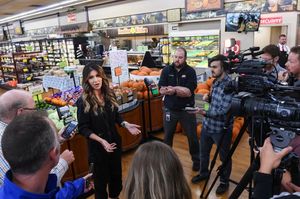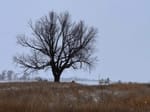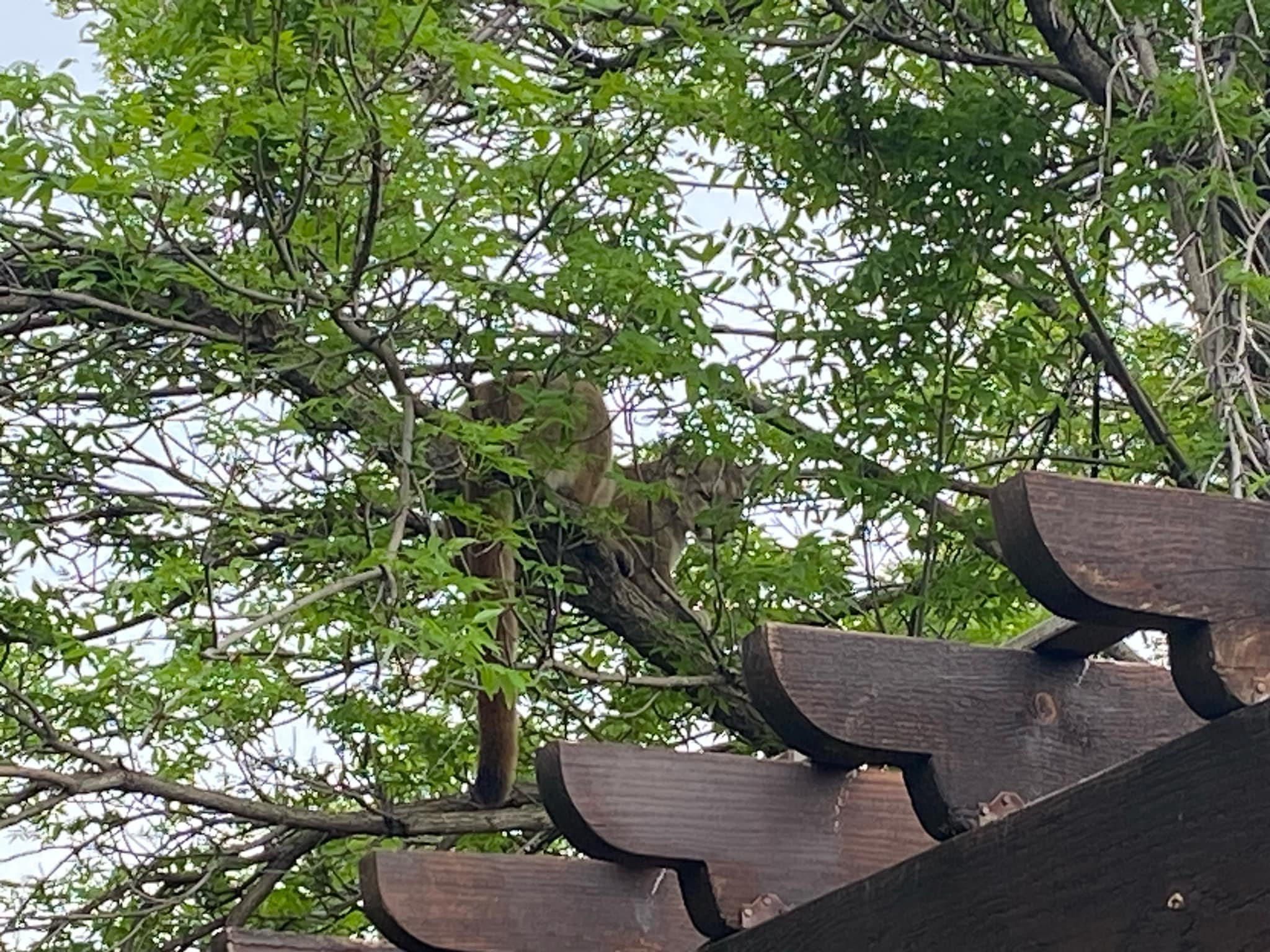
SPEARFISH, S.D. – Holly Hansen doesn’t have hard data to prove that potentially dangerous wild animals are entering residential areas with greater frequency, but she does have some pretty strong anecdotal evidence.
In early May, a black bear entered her suburban Spearfish property and killed 16 ducks, chickens and turkeys, she said. Large paw prints in the mud and two piles of bear scat provided evidence of the daytime intruder’s identity.
On May 23, an adult mountain lion was hunkered down in a tree at a home on Wyoming Court, well within Spearfish city limits and not far from two schools, a recreation center and two parks. State game officers tranquilized the lion and safely relocated it before any people were endangered. However, the property owner posted a note on social media indicating that her children likely walked beneath the big cat, whose method of killing animals can include an ambush from a tree limb overhead.
Also in May, a resident near Whitewood, between Spearfish and Sturgis, reported that a suspected mountain lion had killed a foal found dead on her ranch, according to the Lawrence County Sheriff’s Office.
Those incidents came amid numerous other wild animal sightings reported in residential areas across South Dakota. Among them: a mountain lion photographed on a street in west Rapid City in March and an encounter at Sertoma Park in Sioux Falls in May where a woman walking her dogs had to carry the canines and run from two coyotes that chased her.
“If they’re coming into town and they’re comfortable, that’s a different level of concern,” said Hansen, who has had mountain lions, coyotes, skunks and now a bear visit her Spearfish property, though only the bear attacked animals. “If they’re in your stuff, tearing animals apart and eating them, it’s a dangerous situation.”
Report of mountain lion above kids concerning, official says
Some wildlife interactions in residential areas are to be expected in South Dakota, where numerous cities border the Black Hills National Forest and other animal habitats.
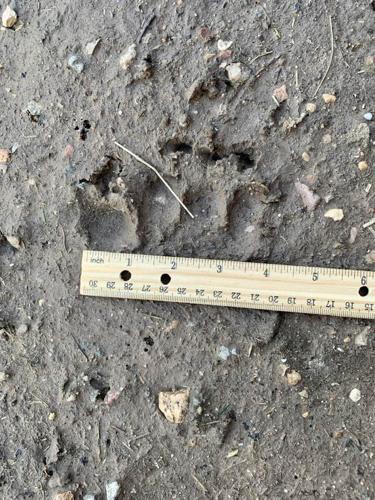
But the lion removed from Spearfish in May should increase concerns about future interactions with humans, said Terry Mayes, a vice president of the South Dakota Wildlife Federation.
“He wasn’t up there to sleep overnight because that is their normal prey activity,” Mayes said. “They ambush from a branch above, and that’s how they get their major kills, including deer and elk. They disable it and eat that animal pretty much entirely, so there’s a potential for an encounter that could be very bad.”
Officials from the South Dakota Department of Game, Fish and Parks — the agency tasked with responding to wild animal encounters — were unwilling to answer questions about the frequency and potential risks of wild animals encroaching into residential areas.
Mike Apland, a GFP supervisor in Spearfish, did not return calls or a text message seeking comment from News Watch.
GFP spokesperson Nick Harrington declined to answer questions about the topic or arrange an interview for News Watch despite numerous email and phone requests.
Animal encounters a global issue
Expanding research into wildlife habitat and human encounters reveals a consistent theme. Encroachment of urban life into animal habitat across the world is increasing. As a result, so are human-animal interactions.
A 2019 study by Colorado State University researchers found that housing and other development had intruded on protected wildlife areas and could reduce them by as much as 12% by 2030.
As urban areas across the world continue to expand, they increasingly shrink habitat for wild animals.
The greater interface between wild animals and residential and developed areas leads to a change in how wild animals behave. It makes them even more likely to brush up against unsuspecting humans, according to a 2020 review of 83 wildlife studies published in the journal Frontiers in Ecology and Evolution.
That study concluded that 9 in 10 wild animals adapted to their new urban habitat by changing their diets to include more human foods. They also reduced their range of movement. Both changes could make them more likely to enter or even reside entirely in urban areas.
A July 2020 National Geographic article examined the rising incidence of wildlife in urban areas. It included a map showing how one collared coyote in 2014 had a den atop a parking garage in Chicago and traveled along elevated train tracks and other urban corridors from Michigan Avenue downtown and several miles along Lake Michigan to the city’s south side.
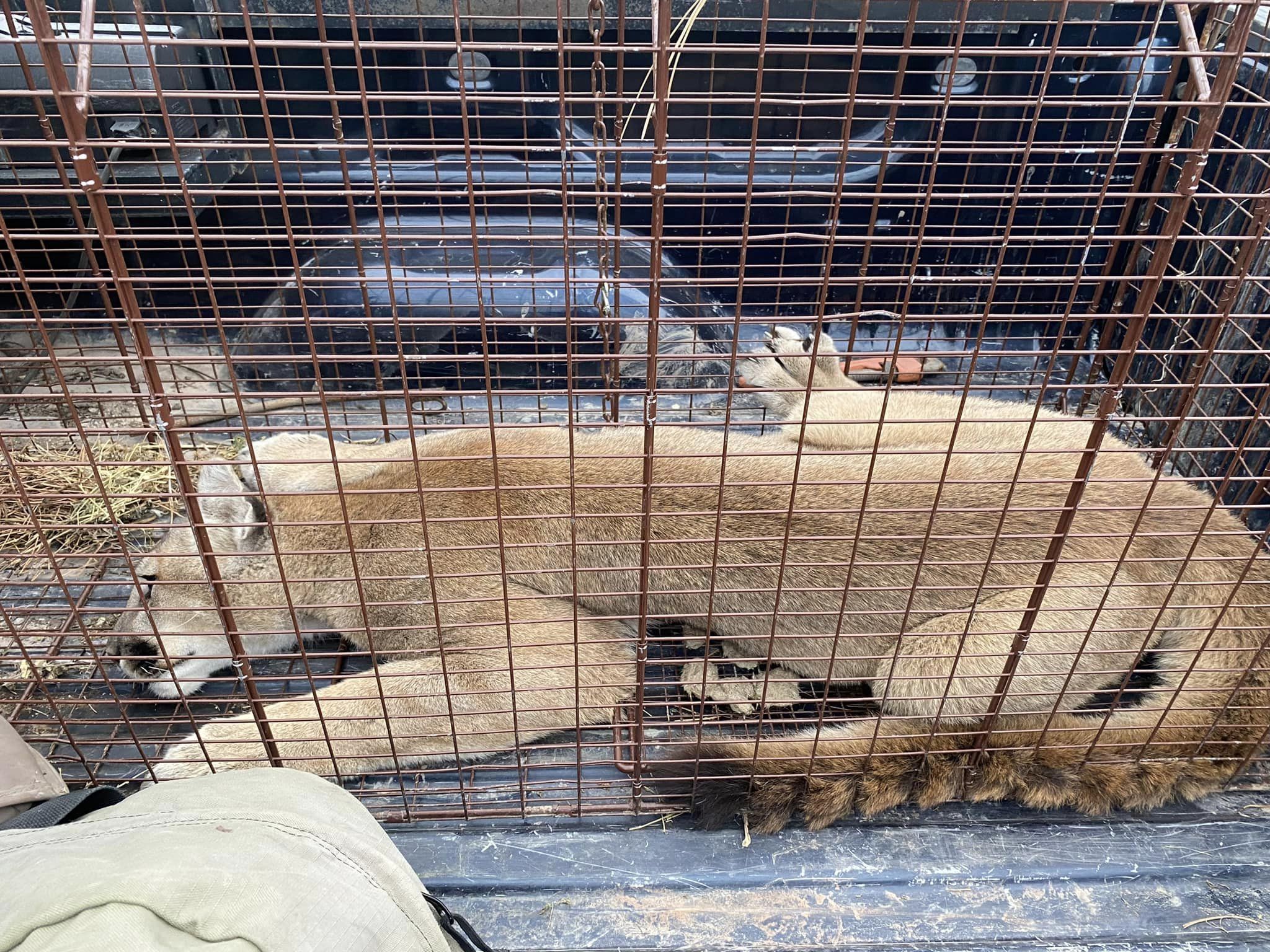
Increased interactions bad for people and animals
The increasing interface between wild animals and humans in non-wild areas is not good for either side of the equation. But it’s far worse for the animals who find themselves in unfamiliar settings and subject to car accidents or euthanization, said Megan Howell, executive director of the non-profit South Dakota Wildlife Federation.
“I think it’s harder on the animals for sure because they don’t have the habitat they need. And they’re put in a situation where they don’t have malicious intent, they’re just subject to new situations,” she said. “And in those situations, we do need to keep humans safe.”
While feeding habits, a change in availability of food or water or illness can lead wild animals into residential areas, the biggest reason for increasing human interactions is loss of habitat for animals across South Dakota and the world, Howell said.
“We’ve lost so much habitat. And not only that, but it’s more fragmented, so the habitat isn’t in big chunks, which is what most wildlife needs to thrive,” Howell said. “When they lose their habitat, that’s when we have more interactions.”
Small steps to possible improvement
Farmers and urban planners can improve practices to maintain animal habitat and provide buffers between wild areas and residential or crop lands, Howell said.
Public education can help residents maintain suburban or rural properties in ways that reduce animal interactions.
And government and environmental groups can continue to seek money and methods to put more land under protection.
“Everyone that has an interest in wildlife or any natural resources, we need to remember that it’s ours and we need to protect it,” she said. “For the federation, we personally take it as a responsibility to protect the natural resources because they are a public trust.”

Mountain lions, and the hunt, hot topics in SD
Mountain lions have a long and storied history in South Dakota, and the hunting season remains a controversial program for many.
The mountain lion population was strong in the 1800s but rapidly declined amid unregulated hunting in the early 1900s to the point where the animal was listed as a state threatened and protected species from 1978 to 2003. A hunting season was approved in 2005 and has been in place since.
Due to difficulty of pursuit and sometimes challenging weather (light snow is best for tracking and sighting), hunters have had a hard time reaching the state’s annual quota of 60 total lions or 40 females killed.
The Black Hills season runs from December to April, and prairie hunting is allowed year-round. Hunters are allowed to use dogs in the hunt in Custer State Park and on some other public lands.
Big male mountain lion topped 150 pounds
About 3,000 to 4,000 lion licenses are sold each year, and 2011-2012 was the last time the quota was reached, with 73 animals taken in the Black Hills and Custer State Park.
In recent years, the kill total has ranged from a low of 21 in 2018-2019 to a recent high of 51 total in 2019-2020. So far in 2023, 44 lions have been killed, the largest a 153-pound male estimated to be 7½ years old taken in January in Pennington County.
A 2021 proposal to expand use of hounds to hunt on some public lands outside Custer State Park was opposed by numerous residents who wrote to the GFP before the commission voted in favor. Their comments shone a light on the emotions surrounding the lion hunt overall in South Dakota.
Some argued that the rules could decimate the state’s population of roughly 300 lions, while others decried the lion hunt as existing only to provide hunters with a trophy.
“I am very opposed to a pointless mountain lion season,” Katie Gilmore of Harrisburg wrote. “Shooting animals for food serves a purpose, trophy hunting does not.”
Others were opposed to the use of dogs in lion hunting, which often culminates in a lion being flushed up a tree where it can be shot.
“It is bad enough we have a hunting season on mountain lions when there is no need for one, but to allow the use of hounds is truly despicable,” wrote Teresa Hicks of Rapid City. “This isn’t hunting. It’s cruel and unsportsmanlike.”
But the GFP and some wildlife groups support the hunt as an important way to manage the state’s lion population. The season continues “as a management tool to manage mountain lion populations at a desired level,” according to the GFP website.
Deer population may influence interactions
In addition to habitat loss, the declining deer population in the Black Hills may be another reason mountain lions are migrating into residential areas, according to Mayes with the South Dakota Wildlife Federation, who has become an animal behavior expert.
Deer populations — a primary food source for mountain lions — have declined slightly due to animal losses caused by the emergence of chronic wasting disease and epizootic hemorrhagic disease, a viral illness spread by midge flies, Mayes said.
One metric of deer population is the annual harvest by hunters, which reached a low of roughly 20,000 per year in the late 1970s, rebounded to nearly 100,000 a year in 2010 and recently has hovered closer to 50,000 annually.
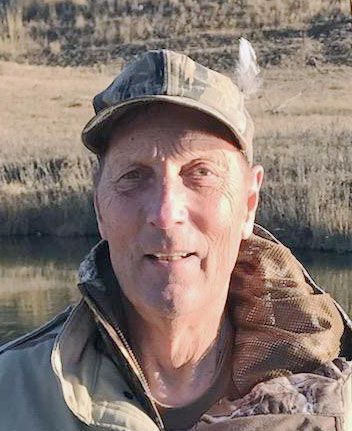
Along with population changes, more deer have taken up full-time residence in South Dakota cities. That has caused more than 300 car-deer crashes and $1 million in property damage a year in Rapid City, said Mayes, who serves on the Rapid City wildlife management board.
In recent years, Mayes said, more deer have become part of established herds that are born, live and die entirely inside city limits. That not only dramatically increases the likelihood of animal interactions with humans but theoretically could attract more lions into buffer lands in and outside the urban area.
The high population of deer in Rapid City has led to six years of an annual culling by city sharpshooters, who removed 237 deer in January and February 2023, according to city records.
A devastating loss of family’s fowl
Hansen, the Spearfish area resident, said the bear that tore up her yard and killed her fowl entered her property sometime during the daylight hours of Mother’s Day while she and her sons were off fishing.
She keeps animal feed and garbage in metal containers with strong lids to reduce enticements for wild animal visits, but she has experienced a mountain lion on her deck and other close calls with coyotes and other critters.
The bear climbed a wood pile and broke through a fence before clawing and tearing up her animal houses, killing numerous farm fowl but also a “silly turkey” that followed her around, pecked at windows to get attention and had become somewhat of a pet.

“I walked out there, and it was pretty devastating. There were dead animals and animal parts everywhere,” she said. “The bear had torn off a panel attached with deck screws, and he tore off wood and wire.”
The bear scat found on her property contained corn and egg shells, which Hansen said likely came from attacks the bear reportedly made on her neighbors’ properties.
Seeking greater information sharing
Hansen said the bear attack and recent mountain lion sightings around Spearfish have heightened her concerns to where she tries not to do chores after dark and traverse her property with a dog or other person present.
“I’ve seen more and more mountain lions in the past year and more and more coyotes,” she said. “They say there’s never been a mountain lion attack in South Dakota. But there’s also never been a bear killing this many animals, so maybe anything is possible, and it’s just a matter of time.”
Hansen said she has shared her bear story with neighbors so they are aware. She added that she felt like GFP officials have not done enough to inform the public about wild animal encounters on her property and in other areas of South Dakota. “I think we need to know so people can be prepared,” she said.
Risk can be mitigated, not eliminated
Mayes, who has seen mountain lion tracks at his home about a mile from Monument Hospital in Rapid City, said wild animals will adapt to their surroundings fairly quickly and do what they must to survive, even if it means traipsing into areas populated by humans.
“They’re adaptable, they know where the food is, and with them it’s all about survival,” he said.
Mayes said that regardless of the species, people need to realize that animal encounters are always possible, and that some basic precautions can reduce the risk of a negative interaction.
He urged people not to feed wildlife, to keep animal feed and household garbage safely secured, and to drive slower and be more aware of potential animal movement at dusk, overnight and dawn.
“We have to make peace with the fact that we’re going to interact. And we have to know that you can do things to mitigate that, but you can’t eliminate it,” he said.

